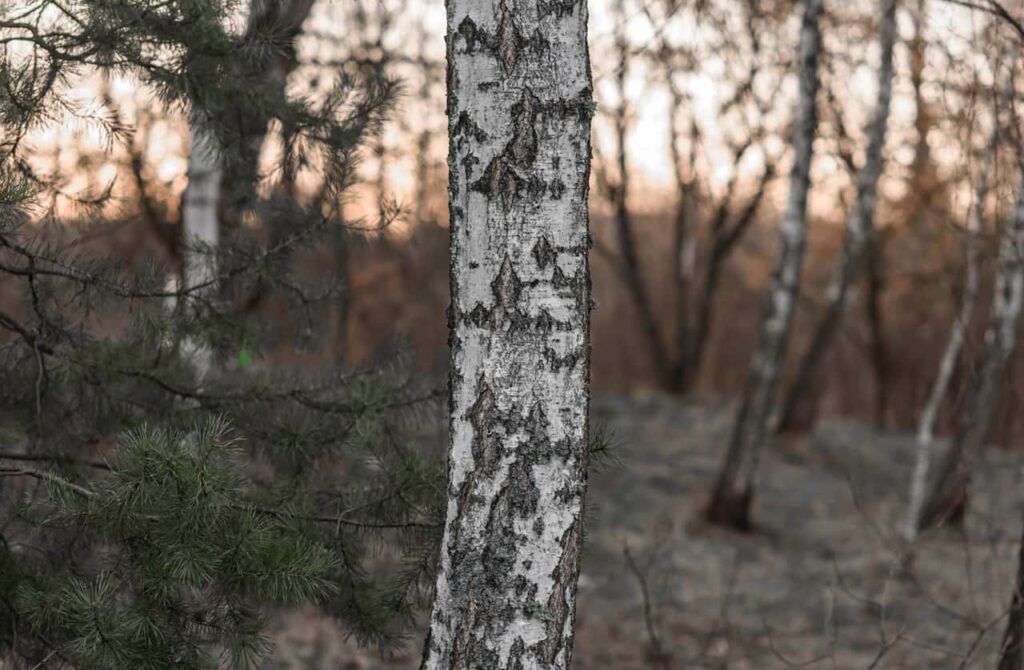Blog
What is Birch Dieback?

Birch are beautiful trees that add visual intrigue to your yard. However, they require specific care to thrive. Here’s what you need to know if the birch tree in your yard is starting to suffer birch dieback disease.
Birch dieback is a condition that can affect all types of birch trees. It causes the branches at the top of the tree to die off. This can be caused by several factors, including insufficient water, lack of nutrients and pest infestation. Trees often decline for several years before dying.
Signs of Birch Dieback
Dead branches and wilting foliage at the top of the birch tree are telltale signs of birch dieback. The first signs of damage usually start in midsummer when the tree’s leaves start to turn yellow and fall off. Dieback generally begins towards the top of the tree and at the ends of the branches. The following spring, you may notice some dead branches, and the birch tree will have sparse, unhealthy-looking foliage.
In severe cases of dieback, the tree may die or become infested with insects like the bronze birch borer or leaf miner. Birch trees with dieback and under moisture stress are also more susceptible to winter injury.
How to Prevent Birch Dieback
In nature, birch trees grow in moist locations near lakes and streams where the ground is shaded and kept fairly cool. However, in residential yards, birch trees are often planted on open, exposed sites, which aren’t conducive to healthy growth.
The best safeguard against birch dieback is providing the tree with good growing conditions. Plant birch trees in partial shade and use an organic mulch like wood chips, pine cones or decorative rocks to help keep the soil around the roots moist and cool. The mulch should be 4 to 6 inches deep and extend from the trunk out under the tree’s canopy.
You must also water your birch tree regularly to keep it healthy and prevent dieback. Light rains and watering your grass won’t soak down to the level of the tree roots. In the summer, water your tree every two weeks by soaking the soil to at least 20 centimetres (8 inches) down, preferably 45-60 centimetres (18-24 inches). The amount of water needed depends on the soil type.
Water halfway from the trunk to the drip line and the same distance beyond the drip line. The drip line is an imaginary line on the ground directly beneath the outermost tips of the tree’s branches. It’s more important to water this area rather than next to the trunk. Reducing the amount of water in late August and September is advisable to allow the tree to harden off. In early to late October, birch trees should be watered well in preparation for winter.
How to Treat Birch Dieback
The good news is that it’s possible to save your birch tree if you catch dieback early by pruning dead or diseased branches in late spring or early fall. Depending on the size of the branches, you may need to have them removed professionally. Then, make sure you keep a regular watering and fertilizing schedule. Birch trees depend on having plenty of water and nutrients.
If your birch tree has become infested with birch leaf miner due to the dieback, our team can apply a systemic organic pesticide called TreeAzin®. This product is made from neem tree seed extracts. It is injected directly into the base of the affected tree, where it’s absorbed by the xylem, carried into the leaf and eventually eaten by the insect.
Unfortunately, sometimes the tree may be beyond saving. Birch trees often have two or three trunks growing from the root base, and if all of these main trunks are unhealthy, the tree will most likely die. A trained arborist from ArborCare® can come to your property to assess the situation and suggest an appropriate course of action.
Treatment for Birch Tree Disease in Western Canada
At ArborCare, our arborists provide various plant management services for residential and commercial customers in Calgary, Edmonton, Kelowna and Winnipeg, including tree pruning, removal and planting. Contact us today to schedule a consultation and assessment with a member of our team.
 1-877-444-8733
1-877-444-8733